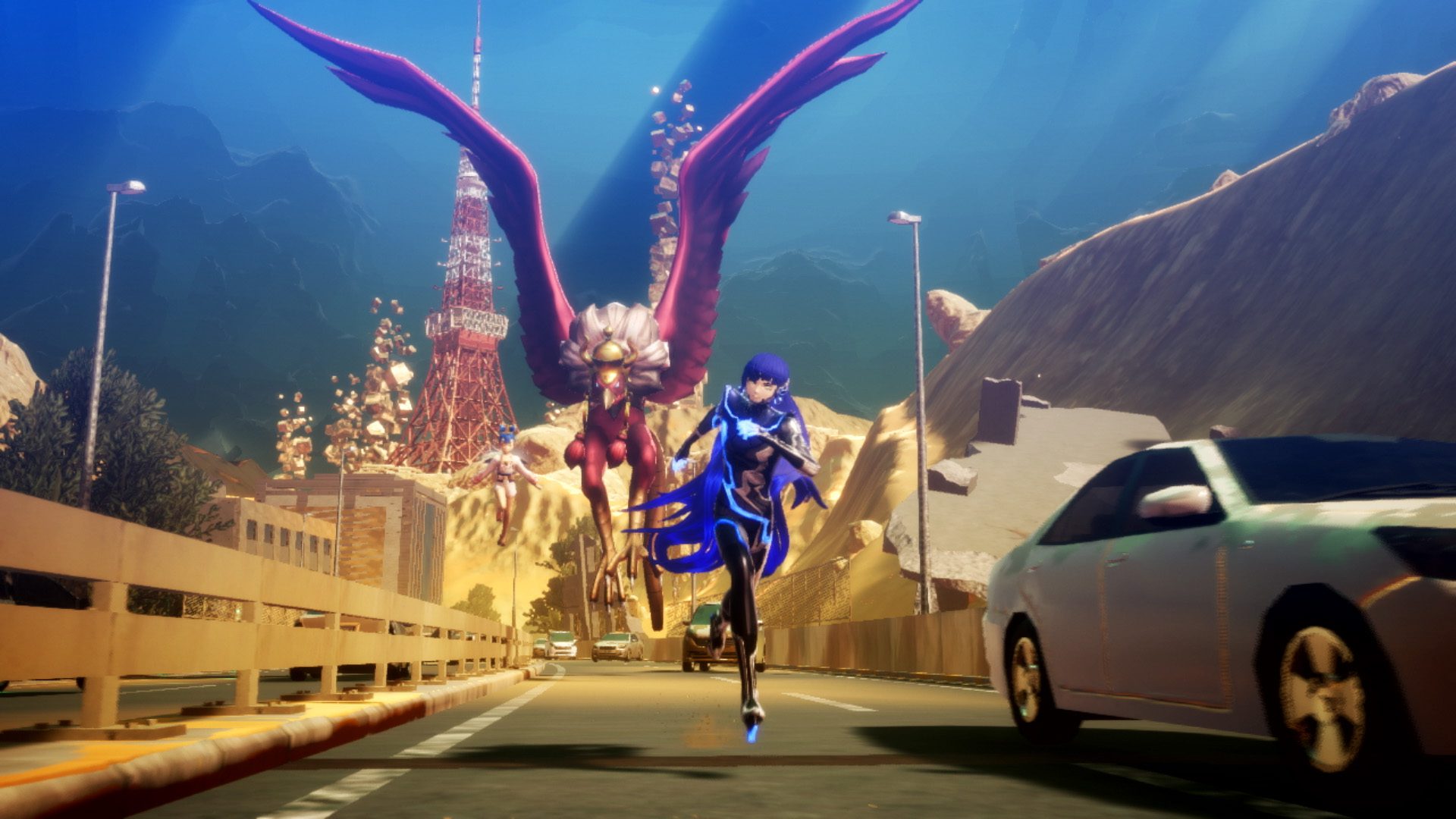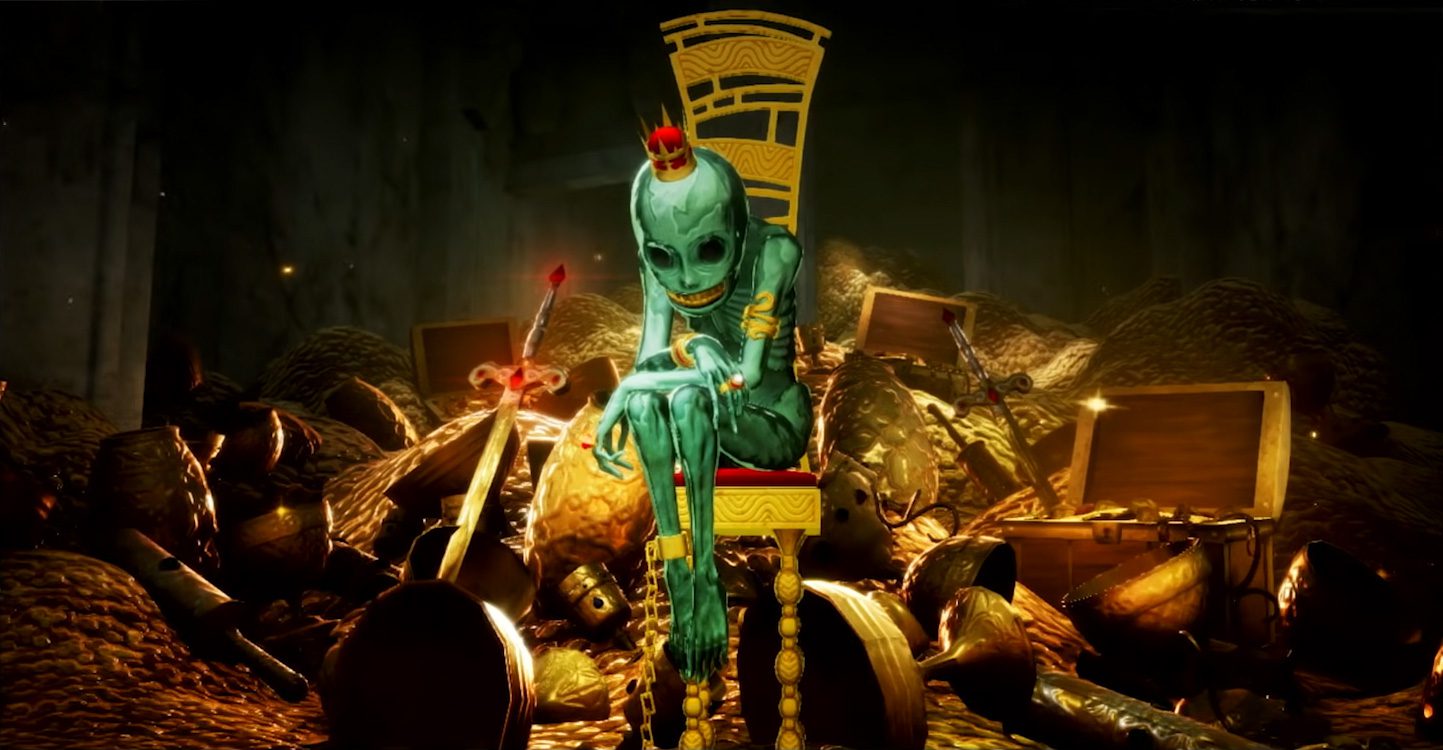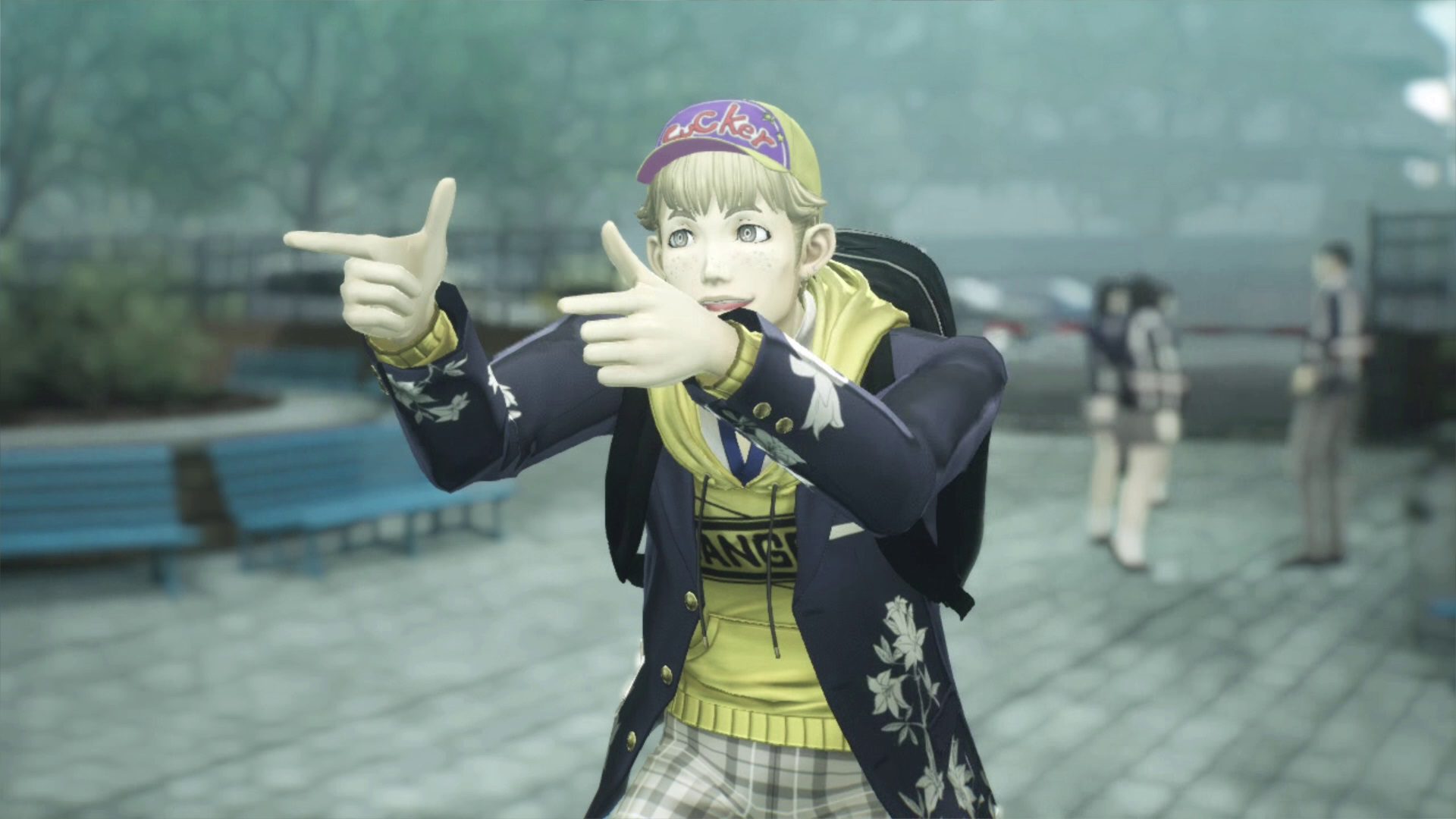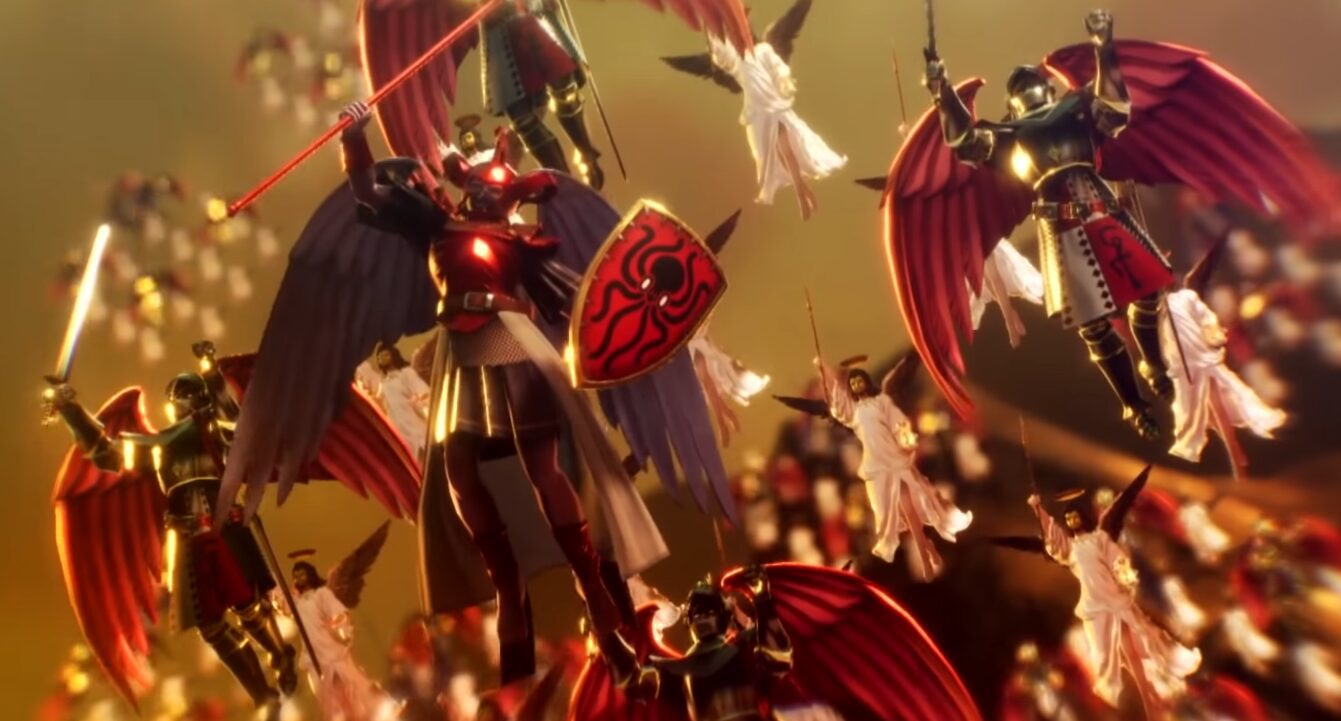Jack is back
Persona might rule the roost at Atlus, but I’m always ready for a new Shin Megami Tensei. And you could say that it’s been a while! Although Apocalypse kind of counts, it’s been over eight years since the last fully numbered SMT RPG, and really, five years since Apocalypse, which is a long enough wait. Given that Shin Megami Tensei V was the first console iteration of the series in a long time, and Atlus was experimenting with a few drastic changes to the formula, there was room to be worried.
I think most of those fears are going to wash over people as soon as they play it.

Shin Megami Tensei V (Nintendo Switch)
Developer: Atlus
Publisher: Sega
Released: November 12, 2021
MSRP: $59.99
The modern-school kid-thrust-into-an-apocalyptic event setup is very much Atlus’ wheelhouse, but still very unique outside of the MegaTen universe. The chaos happens quickly, and you’re asked to make sense of it while slowly watching the story unfold through various revelatory incidents. The gist, without going too deep: you and a spiritual entity combine into a superior being called a Nahobino, and are wrapped up in a war. The result is an incredibly striking protagonist, with designs that are doubled-down upon given the fantastic art direction and visual style (which pop on an OLED screen).
Atlus has shown time and time again that it has no issues making games that are chock full of personality, and the increased scope and scale of Shin Megami Tensei V on the Switch is felt in multiple ways. The neon hues absolutely do it for me — everything is crisp, and best of all, clear. Demon designs, especially classic party members that have been around for ages, look more detailed than ever. This is how you do a modern take on a collectible-creature-RPG (not naming any names).
The narrative still does that thing where it masterfully swaps between cute and grimdark on a whim. Someone can get murdered, then minutes later you’re chatting it up with a cute anime companion who may or may not have a dark sense of humor. SMT V’s voice acting ranges from good to fantastic as pretty much all the demons nail it (even if they have a limited amount of dialogue), as do the core cast members. Hardly anyone overstays their welcome, as you can go long stretches where you’re roaming around and doing your own thing in the overworld. About that!
Shin Megami Tensei V‘s flow is super interesting, due to the greater emphasis on roaming through sandboxes, with light platforming elements. Chrono Trigger style, you can see all of the enemies out in the overworld — including superbosses, of which there are many. You can opt to take the offensive and slash at them for a better chance at gaining the initiative in the subsequent combat, or you can run from their attempts to chase you down.
I was kind of taken aback, in a good way, at how big those biomes are. Generally, you’ll progress through some story bits, get introduced to another huge map (which takes several hours, if not more to clear), do more critical-path story, then jump back into another biome. With this formula, you can set your own pace in terms of how much you choose to explore, fight, or get through the narrative.
The beauty of Shin Megami Tensei V, and why I was constantly drawn to it, is that nothing feels like it’s wasted or left behind. If you miss an area and a few power-ups/items, it’s not the end of the world. You quickly unlock a full fast-travel system that lets you go back to any save point in the game, across multiple regions. So if you have a quest you got in the first five hours, and feel like completing it at some point in say, hour 15, you can go back and do that.
Or if you got caught up in a superboss fight that was 20 levels above you, you can recall where that was, teleport back, and take them on when you’re more prepared. The convenience factor is plussed up when you unlock a mechanic that lets you press the L button to immediately go back to the last save point you visited without a penalty. Just know that there will be crushing moments where you forgot to save, or ran into an enemy that instantly overpowers you in the first turn of combat — and you’ll need to manually load your last file.

Although these zones can be massive, you aren’t going to get lost, and you have the chance to zip around at will to locations basically whenever you want (minus some of the aforementioned story bits, which want you to focus on certain story locations for a while). It’s all very streamlined, and really easy to get sucked into in as little as an hour of play.
Right near the start, you’ll kind of understand the gist of leveling up, building out your character with a statline and magical affinity of your choice, and the demon recruiting system, which has a “gotta catch ’em all” feel to it. By that point you’ll probably be like “I get it,” and decide to go all-in or not. You can attain a more godly status through miracles, which are like perks that provide in- and out-of-combat bonuses. Destroying abscesses (fixed miniboss fights) will increase your perk pool, and points can be earned in several ways (including pure exploration).
Dashing (which triggers a “Naruto/Sonic run” animation) is super fast, and the platforming bits are reigned in so they don’t approach the realm of annoyance, but also allow for some moments to be considered legitimate “jumping puzzles.” Again, balance is what Shin Megami Tensei V is so good at. As time went on, layers start to peel back on the sandbox system and I started to get more invested. There’s an order to it all, but there’s plenty of spokes on that figurative wheel that you can swap back and forth between.
Another big element, of course, is combat. The turn-based system in SMT V is super snappy and responsive, while evoking its own menu style (which is easy to decipher). If enemies die due to an elemental attack, they’ll waste away with a unique animation, like dissolving in a light force or breaking apart due to a frost spell. Strategic depth is mostly built off of the press-the-advantage mechanic, which lets you gain extra actions by exploiting weaknesses (Nocturne).

You might also need to build toward a certain boss, by bringing in big gun demon party members that are strong as a baseline, and don’t trigger elemental weakness advantage pressing on the enemy side. I can see some people getting a little frustrated with a few moments (think Nocturne), but there’s always an easier difficulty setting to toggle at will if that happens. Some grinding might be needed at points, but never to the point of excess, in my experience.
Speaking of swapping party members in and out, the demon recruiting system, facilitated through “talking” to demons, is still very much alive and well in Shin Megami Tensei V. This is where a lot of the classic SMT personality shines through, since different demons might react to different prompts (such as choosing to stand down, or glare in their direction), preferring an emphatic or a dominating leader.
Some demons will fleece you for cash — or health, or items — and then join you, or run away. Others might taunt you, and not give themselves up to your Pokedex (tome) so easily. It can be frustrating at times, but demon spawns are carefully crafted, so it’s not a major issue if you fail: you can just try, try again in the same area. Plus, there’s the returning convenience of fusing demons together to make a new one (provided you meet the minimum level requirement, like a Pokemon badge), alongside of the thrill of discovery when creating special party members.
Of course, SMT focuses more on impermanence than a lot of similar games. You’re not expected to keep the same party forever, and fusing demons means you have to go re-recruit the ones you fused if you want them again. Also, your maximum party size has a hard cap, so you’ll eventually need to dump demons into a pool, where you need to pay in-game cash to fetch them back out. It’s addicting because of how simple the process is: the game logs every demon you register, so you can go on a catching spree, register them all, then release them. You will have to pay to get them back, but again, impermanence is stressed.

Ultimately, it’s the best of both worlds. You get your dopamine when you see that you’ve “logged” a demon and can re-summon them forever. But Atlus also encourages experimentation with this system, asking you to constantly try new demon types, elemental combinations, and strategies. The infusion system is the secret ingredient, allowing players to utilize what is essentially demon DNA to inject abilities and affinities into either the main character or other demons. There’s a lot of customization afoot in SMT V and it’s really hard to feel placated with what you have.
The seemingly endless possibilities of Shin Megami Tensei V directly fueled my desire to play it from the moment I got my copy. It’s overwhelming, but compartmentalized. The world is technically finite, but feels limitless. It’s just what a lot of people want out of an RPG, and the strong personality-driven throughput helps propel it past a lot of its competition.
[This review is based on a retail build of the game provided by the publisher.]













Published: Nov 4, 2021 09:00 am